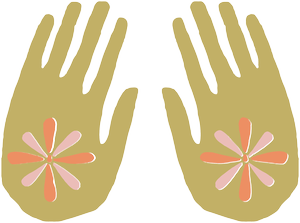
5/24/2025
When we think about grief, we often associate it with what happens after a loss. But grief doesn’t always wait. For many people, it begins much earlier—before the final goodbye. This experience is known as anticipatory grief, and it’s something we don’t talk about enough.
Whether you’re caring for a loved one with a terminal illness, watching a beloved pet slow down, or bracing for a big life change, anticipatory grief can feel just as heavy (and just as real) as grief that comes after a loss. Acknowledging and honoring this grief early can be a powerful step toward healing.
What Is Anticipatory Grief?
Anticipatory grief is the emotional process one goes through when they know a loss is coming. It may feel like sadness, fear, guilt, anger, or even occasional relief. It often shows up long before the actual event, especially when the loss involves a prolonged illness or a slow decline.
As grief expert Therese Rando explains, “Anticipatory grief allows us to begin saying goodbye—emotionally and mentally—before the moment of actual loss” (Rando, 2000). While that goodbye can be painful, it also creates a space for connection and intentional presence with the time that remains.
The Role of Thoughts in Grief: A CBT Perspective
From a Cognitive Behavioral Therapy (CBT) lens, anticipatory grief often stirs up difficult thoughts and beliefs. You might catch yourself thinking:
“I should be stronger.”
“I won’t survive this.”
“I can’t let myself feel this way.”
These types of thoughts can increase distress and lead to patterns like avoidance, emotional numbing, or even disconnection from the people and moments that matter most.
CBT strategies such as thought records can help people track and challenge these unhelpful beliefs, while techniques like behavioral activation can gently encourage engagement in meaningful daily activities (Beck, 2011). Research has shown that CBT interventions can significantly reduce depressive symptoms and anxiety in caregivers dealing with anticipatory grief (Simoneau et al., 2013).
How Grief Lives in the Body: A Somatic Approach
Grief is also physical! Many people experiencing anticipatory grief report:
Fatigue
Sleep disturbances
Tightness in the chest
Restlessness or agitation
These sensations are not just symptoms to manage, they’re messages from your body. Somatic therapy techniques assist you in listening to these signals with compassion, such as body scanning, grounding exercises, and box breathing breathing help bring awareness to where grief is being held physically, and support gentle release and regulation (Ogden, Minton, & Pain, 2006).
Mindfulness-based somatic practices have also been shown to improve emotional regulation and build nervous system resilience in the face of ongoing grief (Kabat-Zinn, 2003).
Making Space for the Process
One of the most healing steps in dealing with anticipatory grief is simply naming it. Many people feel a sense of clarity or relief when they realize, “This is grief too.” It can lift the emotional fog and open up space for reflection, preparation, and even moments of peace.
Therapy can serve as a holding space, a place to explore fears, process memories, talk through uncertainty, or prepare for meaningful goodbyes. Some people use this time to create rituals, write letters, or reflect on the legacy they want to carry forward.
You’re Not Alone
Anticipatory grief can feel isolating on an individual level however it’s a strangely human experience. Whether you’re feeling overwhelmed, disconnected, or just unsure what to feel, support is available. Through tools like CBT, somatic practices, and the therapeutic relationship itself, this time can become not just one of sorrow but, in time, transformation.
If you are going through anticipatory grief, know that you’re not alone. Help is out there and healing is possible, even before the goodbye.
References
Beck, J. S. (2011). Cognitive Behavior Therapy: Basics and Beyond (2nd ed.). Guilford Press.
Kabat-Zinn, J. (2003). Mindfulness-Based Interventions in Context: Past, Present, and Future. Clinical Psychology: Science and Practice, 10(2), 144–156.
Ogden, P., Minton, K., & Pain, C. (2006). Trauma and the Body: A Sensorimotor Approach to Psychotherapy. W.W. Norton & Company.
Rando, T. A. (2000). Clinical Dimensions of Anticipatory Mourning: Theory and Practice in Working with the Dying, Their Loved Ones, and Their Caregivers. Research Press.
Simoneau, T. L., Mikulich-Gilbertson, S. K., & Natvig, C. (2013). Psychological Distress and Anticipatory Grief in Caregivers of Individuals With Terminal Illness. Palliative and Supportive Care, 11(3), 223–230.
Elizabeth Travis, LCSW
